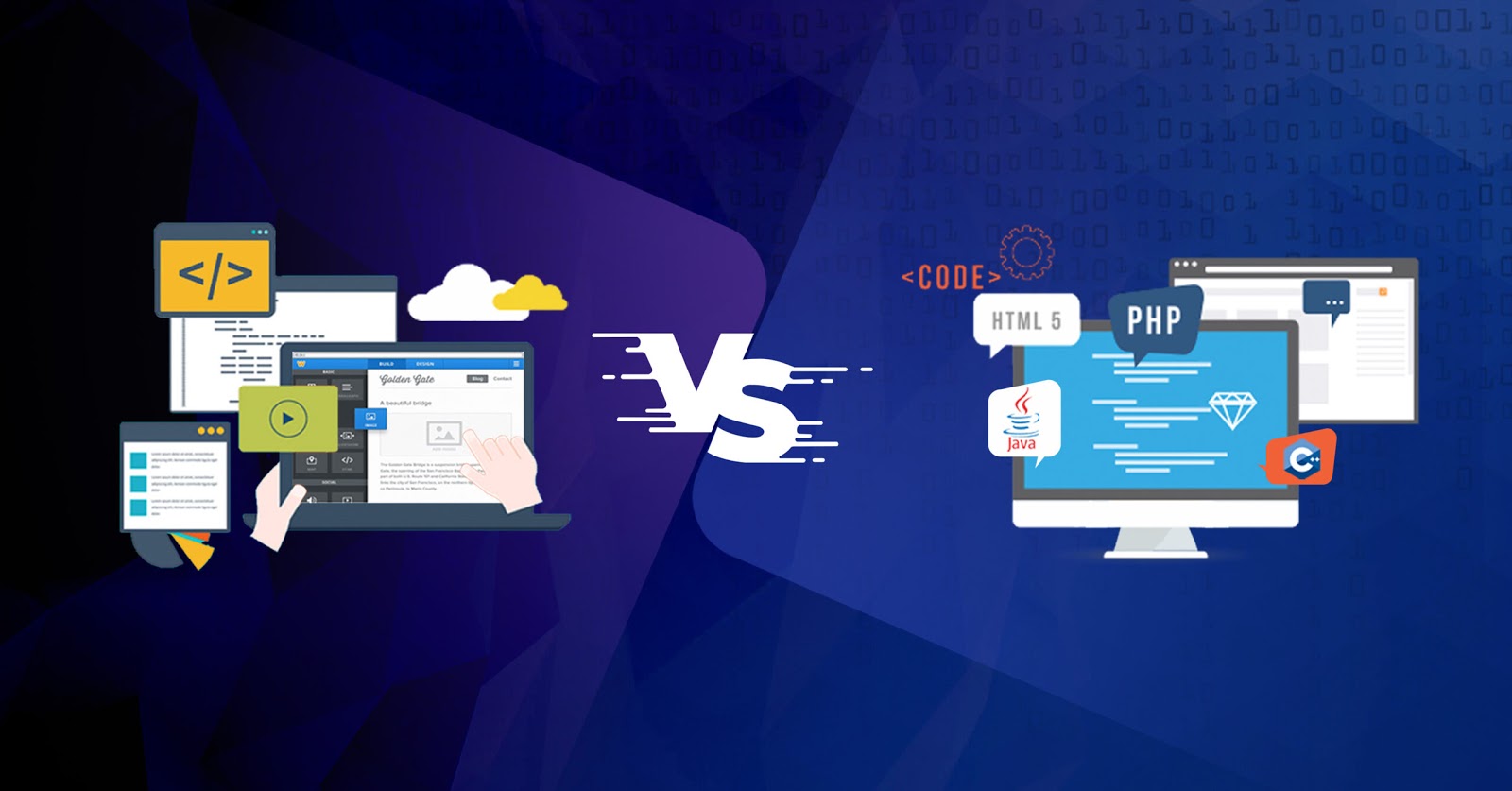While there is no dearth of discussions regarding the “low-code” and “no-code” app development, there is less clarity about the mutual differences between the “no-code” and “low-code” approaches. While there are several such platforms that enable businesses to build rich, dynamic applications without much code writing or actually without writing any code at all.
Many still do not know what these platforms are capable to do and their specific specialties. The principal difference obviously doesn’t concern whether projects need code or not, it is about the kind of projects that can embrace such approaches and the benefits they can get.
The no-code development has particularly become popular for citizen developers or developers with no coding background. Thanks to this approach, people without any coding experience can also build highly functional apps as they don’t need to write a single line of code. The “low-code” development in contrast is actually for professional developers who want to speed up the development process by writing less code.
Here we are going to explain the low code vs no code comparison with their mutual differences and the way these two approaches work.
What is Low-Code Development and How It Works?
Low-code development allows developers to design and build applications at a faster pace with minimum code writing. The low-code development approach is similar to using an IDE with all the inbuilt features that developers can readily use in their app projects. For example, in low-code development, the visual blocks of code can be dragged and dropped to achieve the functionalities.
As the low-code approach can fully replace the traditional code wiring for an app, the professionally skilled developers can actually work smarter and deliver results faster without getting mired in repetitive coding. In some app projects, they need to write code for just one-tenth of the app features or even less.
This ensures faster development while following the standard practices throughout. Many mobile app development services in India prefer this approach because of faster development and fewer demands for resources. No wonder, according to Gartner, the low-code development market is likely to account for more than 65% of app development projects by the year 2024.
The Upsides of Low-Code Development
Apart from the rapid development pace, the low code development approach also has several other upsides. Here we are going to explain the key advantages of the low-code development approach.
- Thanks to low-code development, one can develop apps for several platforms simultaneously and come with some results to show to the stakeholders in days or hours.
- For big and resource-consuming projects, a low-code development approach alongside coding can help to finish the project quicker than building an app from scratch.
- The low-code development approach helps integrate deeper security processes, data, and cross-platform support easily into custom app development and this reduces the risk of the project.
- Thanks to a low-code development approach, an app can also be customised easily with new features, functions, and design elements.
- A company can hire dedicated app developers or taking care of the tools and minimum coding to bring out a sophisticated app at a quick pace.
- The low-code deployment approach by reducing the efforts of development to a minimum makes it extremely easier to roll back features and roll out changes with every update.
Downsides of Low-Code Development
While the benefits and value propositions of low-code development may consume thousands of pages of content, there are also certain downsides that we must remember. Here we explain some of these downsides.
- Because of using pre-built components for app features, it can lose originality and uniqueness.
- Because of pre-developed code lines in the project, the app can have more security vulnerabilities.
- Sometimes by using several pre-coded components the app suffers from compatibility and performance issues.
What Is No-Code Development?
No-code development approach is basically for citizen developers who do not know how to program or are not exposed to the technical aspects of any app. No-code development solutions work simply like popular blogging and CMS platforms that allow building web pages with drag and drop layouts, design elements, and features.
Though no-code development opens up the opportunities for citizen developers to build their own apps, they are really difficult to customize and offer a very limited range of functionalities and features. Generally, the vast majority of the no-code platforms are designed for solving a specific business issue.
How the Low-Code Approach Differs From No-Code Development?
Actually, we can call a whole array of minute details and aspects that make low-code development differ from the no-code development approach. But without expanding our focus to these areas, we would try to explain the key differences.
No-code development can only cater to the citizen developer or businesses trying to build solutions without writing any code. They don’t require little or no training and anyone in a company with a basic understanding of the project can develop business apps at a rapid pace. Among the downsides of this approach, increased security concerns, lots of compliance issues, problems regarding compatibility, integration, and configuration that can be painful for a project in the long run.
Low-code on the other hand can cater to both businesses and professional developers. The business users with this approach can build very useful solutions at a rapid pace by following the guidance of expert IT professionals. So this approach actually helps in extending the capabilities of the IT team while developing really useful apps at a rapid pace.
What Do These Two Approaches Really Mean for Mobile App Projects?
To be precise, when you want to go with a low-code development, you need to have onboard professional experts having development knowledge and skills with native programming languages and OS platforms such as iOS, Android, desktop, etc. For this approach, they also need access to a variety of tools for designing screen layouts.
No-code development in contrast to this approach, offers a much more simplified approach, it just does away with even the minimum amount of coding and instead, it allows building an app by using pre-coded components. Though thus ensures optimum development pace, very low resource requirements, and greater control of the projects, the approach has its downsides as well.
No code development can be hugely problematic for addressing customisation needs, it can compromise with security easily as reusable code is used across multiple apps and you have less expertise on board to extend the capabilities and app features when required.
Conclusion
The comparison is a little ill-contrived as low-code development has a completely different audience than that of no-code development. If your business can afford even a small IT team, low-code development is a better choice for exercising maximum control and flexibility. If your business just needs a single feature quick solution and you lack resources for this, the no-code development can be ideal.










